
Cheesecakes are extremely rich desserts, and it's often difficult to slice a full-sized cheesecake into suitably small and thin portions. Baking the cheesecake in individual ramekins, rather than one large springform pan, is an elegant solution to that difficulty. It ensures equal portions, and you can choose whether to unmold them or serve them right in their ramekins. Aside from shortening the baking time dramatically, making individual cheesecakes is little different from making a single large one.
A Quick Cheesecake Primer
Cheesecakes are a longstanding part of the European culinary tradition, where sweet and savory versions provided hard-working farm families with a high-protein, high-calorie food that could be served even on religious fast days when meat was forbidden. Many fresh cheeses can be used to make them, including quark and mascarpone, but in the United States they typically contain either cream cheese or ricotta. The cheese is beaten with eggs, sugar, a flavoring such as vanilla, and usually cream to make a rich custard. Cheesecake is less sensitive to heat than many custards, but it's best to bake them in a water bath to reduce the risk of overcooking the cheesecake and causing cracks.
Turning Down the Volume
Recipes intended for mini-cheesecakes generally specify which size ramekin to use and how many the recipe should yield. The math is straightforward. If the recipe says it makes 12 cheesecakes at 4 ounces each, you could opt to make 24 tiny 2-ounce portions or 8 in larger 6-ounce ramekins. A regular cheesecake recipe, intended for a 10-inch springform pan, is a bit trickier. Those yield 12 cups of filling, or 4 dozen 4-ounce mini cheesecakes. This is convenient if you have lots of ramekins and want to feed a crowd, but otherwise it's a bit much. Divide the recipe into halves or quarters and freeze any unneeded filling for another day.
Baking the Cheesecakes
If you plan to unmold your mini-cheesecakes, line them first with parchment paper. Cut a circle to fit the bottom of the ramekin, leaving a long rectangular tab at each end to serve as a handle. If you'll be serving your cheesecakes in the ramekins, skip this step and press a crumb crust into the bottom instead. Divide the batter between your ramekins. If you're baking without a water bath, preheat your oven to 350 degrees Fahrenheit and bake the cheesecakes for about 20 minutes, until they're mostly set but still jiggly. If you set them in a pan of water they'll have a finer texture, but will take up to 45 minutes to bake.
Serving the Cheesecakes
Once they come out of your oven, the cheesecakes must be cooled and then refrigerated, covered, for at least 8 hours before they're served. Serving a cheesecake in its ramekin is a simple matter of wiping any baked-on custard from the rim of the ramekin, then garnishing and serving it. To unmold one instead, run the tip of a warmed knife around the inside edge, then invert the ramekin onto your dessert plate. A gentle tug on the parchment paper should bring it right out. If not, rest the ramekin in warm water for 20 to 30 seconds and try again. Sauce and garnish the cheesecake and serve it.
Related Articles

How to Cook Cheesecake in a Cupcake Pan

How to Bake Custard in Ramekins

How to Serve Cannoli
How to Keep Biscuits Warm in a Chafing ...

Can You Cook a Cheesecake in a Pie Tin?

How to Make Sparkling Alcohol-Free ...

How Long in Advance Can You Cook Creme ...
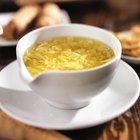
Calories in a Pint of Egg Drop Soup
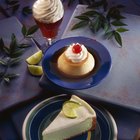
Sugar-Free Coconut Cream Pie
Baking Quiche the Day Before the Party
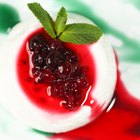
How to Cook Mini Cheesecakes in Ramekins

Brownie Bottom Butterscotch Cheesecake ...
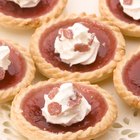
How to Make Mini Tart Shells

Can I Make Sausage-Stuffed Puff ...
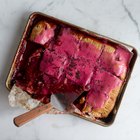
Pop-Tart Pie Recipe

How to Make a Tall Fluffy Cheesecake

The Calories in a Whoopie Pie

How to Measure a Finger of Scotch

Can I Freeze Unused Cupcake Batter?

How to Make Strawberry Lemonade
References
- The Old World Kitchen: The Rich Tradition of European Peasant Cooking; Elizabeth Luard
- The Joy of Baking: Pan Sizes
Resources
Writer Bio
Fred Decker is a trained chef and prolific freelance writer. In previous careers, he sold insurance and mutual funds, and was a longtime retailer. He was educated at Memorial University of Newfoundland and the Northern Alberta Institute of Technology. His articles have appeared on numerous home and garden sites including GoneOutdoors, TheNest and eHow.
Photo Credits
Jupiterimages/Photos.com/Getty Images